6 minutes
Noticing the life around us
During the COVID-19 pandemic my perception of the world changed. Because of home-office, I spent more time alone at home. During my childhood, our cats at my parents home gave me a lot of comfort when being lonely. Unfortunately, I don’t have any pets at my current home, thus I turned my attention towards what other life exists in front of my balcony and windows and in my home. I get pleasure in watching that life and I think it makes me more relaxed. I also started feeling more in touch with the world around me and I think for me that’s part of mindfulness: Not being blind of the world we live in, not being scared or resistant of it, but noticing the ecosystem that we live in and being aware of it.
Birds 🐦
I started paying more attention to birds and got very interested in birding. I really love Corvids and here in Bonn I noticed that there are many magpies which are really fun to observe and super cute. Further, (since I moved here only recently) I was surprised to discover that we have a feral population of rose-ringed parakeet 🦜. I put some nuts on my balcony which the local magpies really seem to enjoy, but they are very shy and only come down to feed when they think that I don’t see them. Therefore, this summer I used the Raspberry Pi that I had lying around to build a birdcam with the instructions and software from mynaturewatch.

Figure 1: Magpie snatching a walnut.
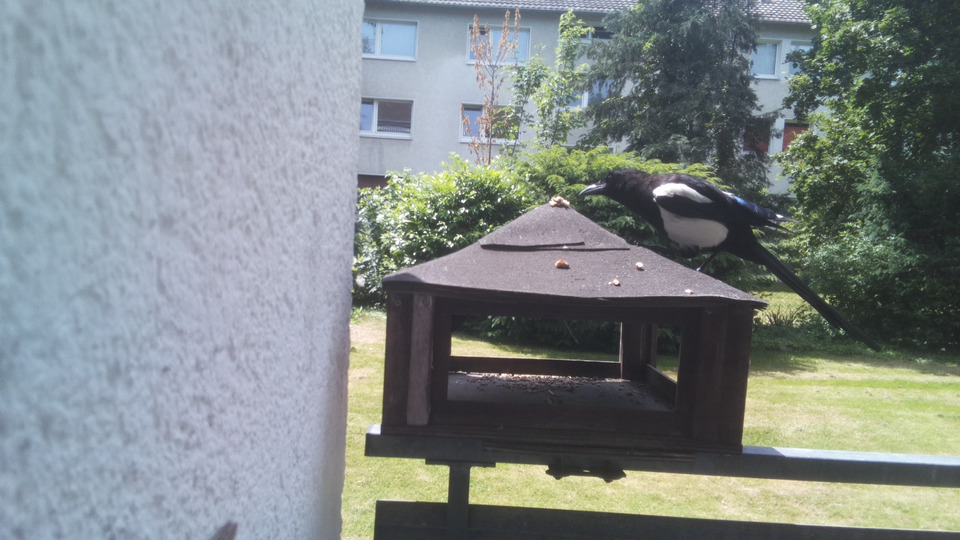
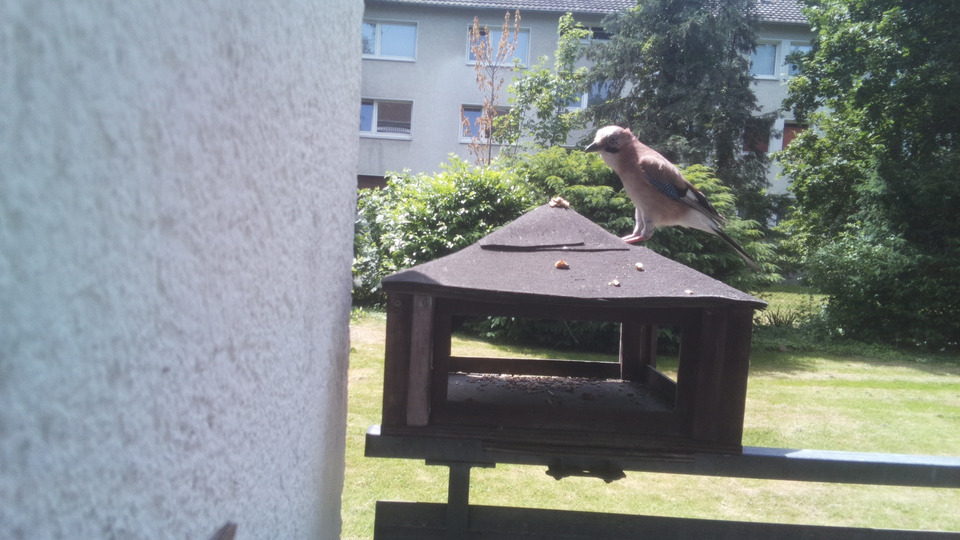
Figure 2: Eurasian jay
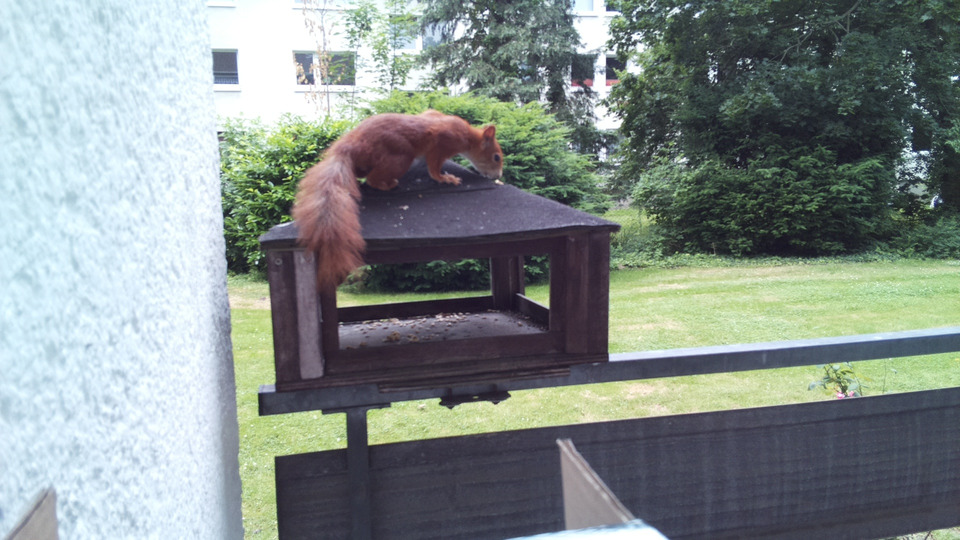
Figure 3: Our ninja-squirrel being sneaky
Later I also finally invested my money in a binocular which I like to use for both watching stars and birds.
Most recently I read the most excellent, fun, cut and informative book A Pocket Guide to Pigeon Watching by Rosemary Mosco and even found out how fascinating some of the most common birds in our cities are 🕊, that I admittedly was originally apathetic towards.
Plants 🪴
During the pandemic, for the first time in my life I decided to buy some edible plants and try to grow some of my own veggies on my window. I bought some tomatoes 🍅 because they are supposed to be beginner-friendly and some Habanero chilli peppers because I really like eating spicy 🌶. It was really fascinated how such a large huge plant can grow from the tiniest seeds. However, I discovered that the plants don’t get much direct light on my west-facing window (with more shadow from the balcony roof) and I assume this (in addition to possible over-fertilizing) is why my cherry tomatoes grew very tall (up to the roof), but had only a very moderate yield. The chillies I probably planted to late in the year and they didn’t have enough time to grow tall enough before fall. However, while the tomato died by now, the Habanero plant looks really healthy and I hope that it will yield fruit next year. Another thing that surprised me is just how much water the tomatoes need compared to e.g. the chilli plant. I now really get why they are among the most climate-unfriendly veggies (or fruit, botanically speaking) that you can buy due to the high water amount they need, so I’ll try to restrict how many tomatoes I buy.
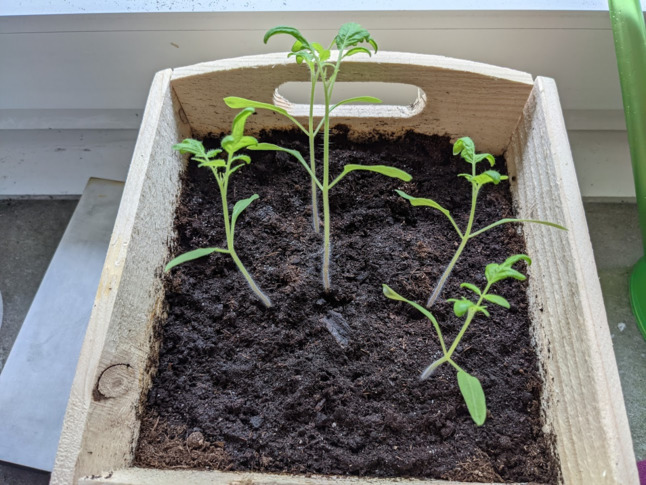
Figure 4: Young tomatoes plants a couple of weaks after sprouting
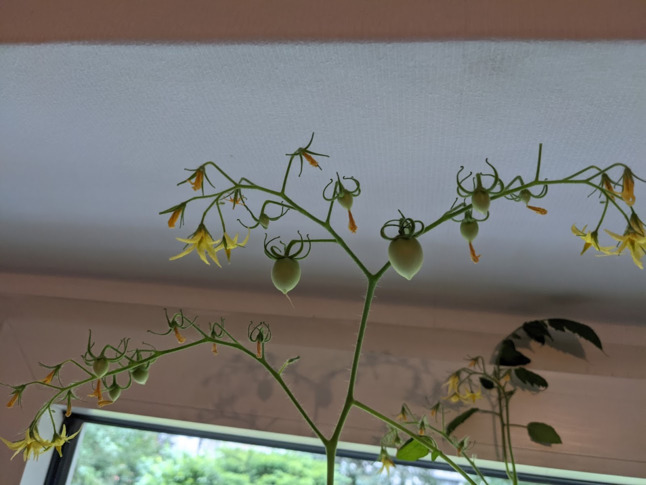
Micro-organisms (Fermentation)
In addition to cooking, I got into fermentation during the pandemic. It started out with making my own Kimchi, followed by Sauerkraut and most recently Kombucha. Among those, Kimchi has the advantage that despite the initial effort, it requires the least waiting time and is already good after a couple of days (you can even directly eat fresh Kimchi after making it and it’s good). Home-made Sauerkraut was something that I know from my Russian grandma who makes it every year and after making Kimchi it was surprisingly simple to make, though requires more patience. Kombucha I started only recently after I got hold of some started liquid (which contains the scoby, a symbiosis of yeast fungi and acid bacteria) and a pellicle (the characteristic biofilm created by the scoby). I had tried Kombucha once once when visiting the US and really missed that I couldn’t easily buy it in Germany. The “Kombucha” in DM just tastes like fruit-tea. So making it myself seems like the only option here in Germany. Making fermented food is in my opinion easier than growing plants for food, yields results more quickly, is not comparable to what you can buy in the supermarked, but still, you have something that is alive (though I admit plants make the better home decoration).
I doubt that these fermented foods are more healthy than simply eating fresh veggies. The scientific literature doesn’t seem to show strong evidence yet (though more research is needed). However, for our ancestors that was one of the few ways to preserve veggies. And in addition, they just taste so good 😋. That got me thinking how so many foods have their characteristic, complex taste due to fermentation with yeast or bacteria, e.g. cheese, wine, beer, bread…. But these micro-organisms are doing there work in the invisible. But thinking about it, they are everywhere around us.
Therefore, I really enjoyed the recent Synapsen Podcast Sie sind unter uns (German) about the bacteria and other micro-organisms all around. In this podcast the scientist Rob Dunn was interviewed, who wrote the book Never home alone about the biome in our homes. I just bought it yesterday and am really looking forward to read it. From the prologue:
This book is the story of both the life that is likely living beside us in our homes and the ways in which that life is changing. The life in our homes speaks to our secrets, our choices, and our future. It influences our health and well-being. It is full of mysteries and shimmers with grandeur and consequence. We do not know the stories of most of the species in our homes, but we know some of them, and what we do know will surprise you. When it comes to the species mating, eating, and thriving alongside us, nothing is quite what it seems.
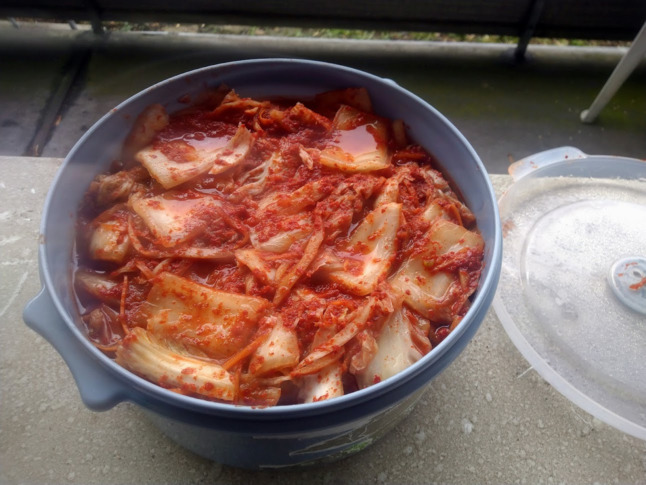
Figure 5: Kimchi making
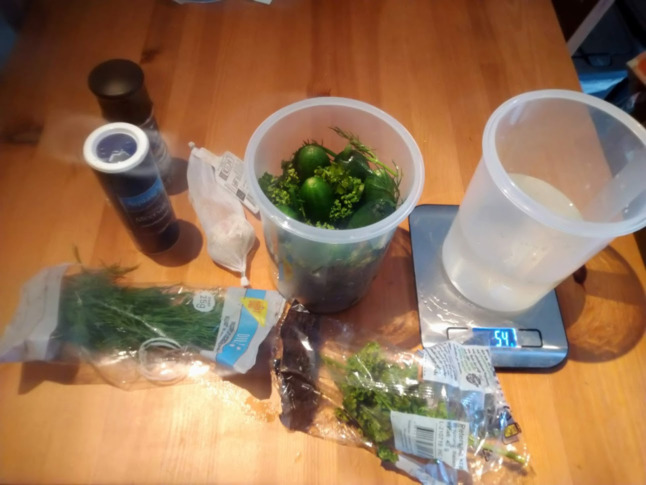
Figure 6: Pickling cucumbers
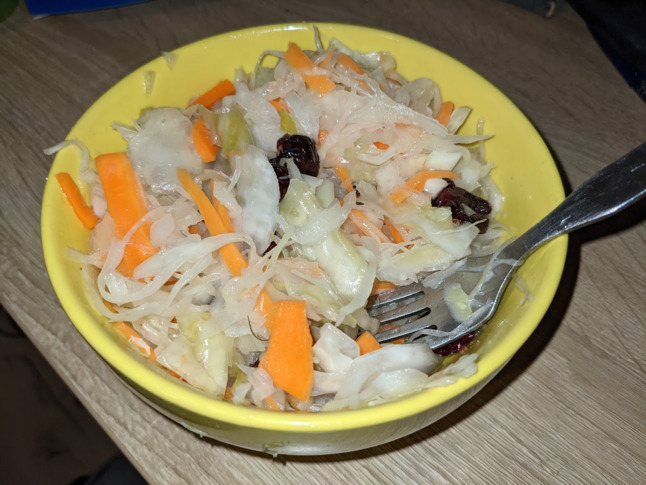
Figure 7: Fresh Sauerkraut salad
Other activities
Like many people, during COVID I started taking more walks and running more and this is a great opportunity to get a closer connection to your surroundings, the nature, wildlife and not-so-wild life like cats and dogs (whom I still really love), so I can only recommend it. Go outside and keep your eyes open!